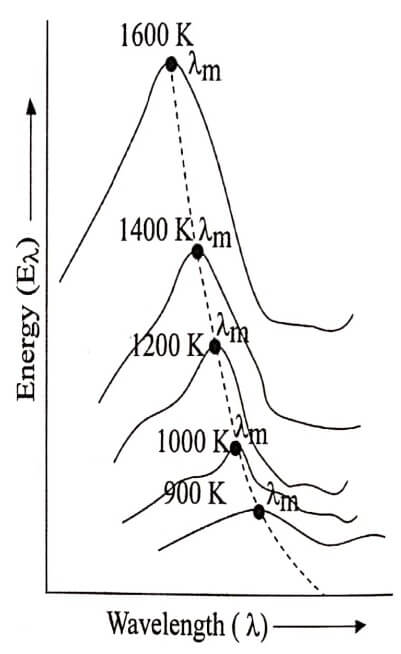The substance or a body which can absorb all the (heat) radiations of all wavelengths incident on it and does not transmit or reflect at all is known as a perfectly black body.
Since, it neither reflects nor transmits any of the incident radiations; it appears black whatever may be the colour of incident radiations. We know, a good absorber of radiation is also a good emitter of radiation. So, a perfectly black body (in the technical sense) emits radiations of all possible wavelengths when it is heated.
Thus, a black body is a substance (or body) which can absorb radiations of all wavelengths incident on it and emits radiations of all wavelength when it is heated.
A perfect black body is an ideal concept, Lamb black, platinum black etc. are considered as almost perfect blackbodies for practical purposes because these can absorb more than 95% of the incident radiations.
Experimental verification
For experimental purpose, a black body is made up by a hollow spherical (copper) enclosure with a small hole (called orifice) in its surface. The inner surface of it is coated with lamp black.
When any radiation enters the spherical enclosure through this hole, it suffers multiple reflections at the inner surface (Fig.1.1) until it is totally absorbed. In this way the body acts as a black body absorber.
When a black body (hollow enclosure) is heated to a uniform temperature, the radiation of all possible wavelengths coming out through its fine hole. It is called black body emitter.
Hence, a perfect black body is a perfect absorber and also a perfect emitter of all wavelengths.

Energy spectrum
-
The distribution of the energy is not uniform.
-
For a particular temperature, the intensity of radiation increases upto a particuler wavelength λm and then it is found to decrease with increase in wave length.
-
As temperature increases, the peak energy shifts towards

Characteristics of black body radiation
-
The radiations are isotropic in nature.
-
The radiations are homogenous in nature.
-
All bodies placed inside the enclosure also emit black body radiations.
-
The energy density (i.e. energy radiated per unit area per second) does not depend upon the nature or shape of the walls of enclosure. It depends only upon the temperature of the enclosure.
| Read More Topics |
| De-Broglie’s concept of matter |
| Experimental verification of compton effect |
| Method to determine thermal conductivity |





